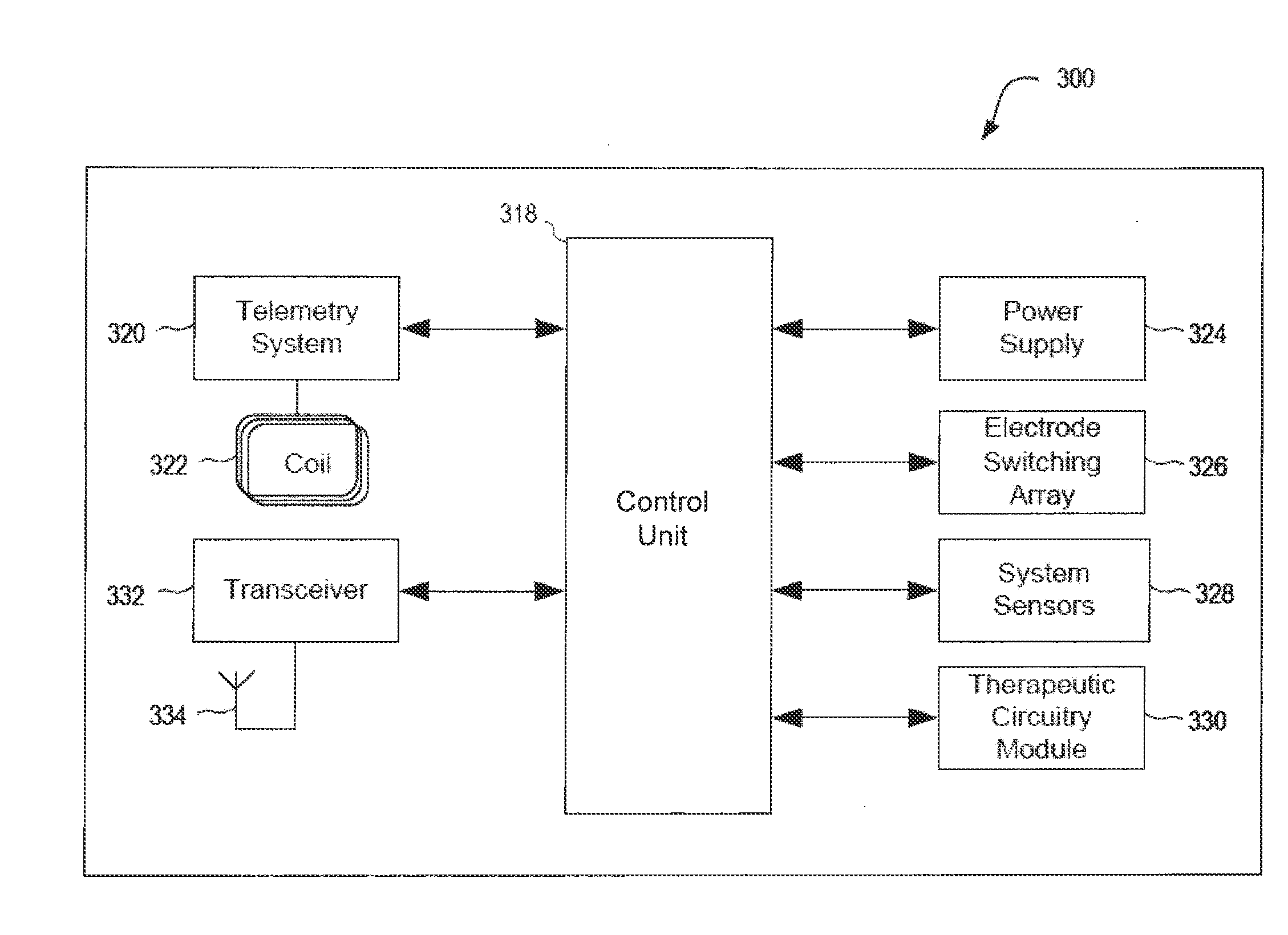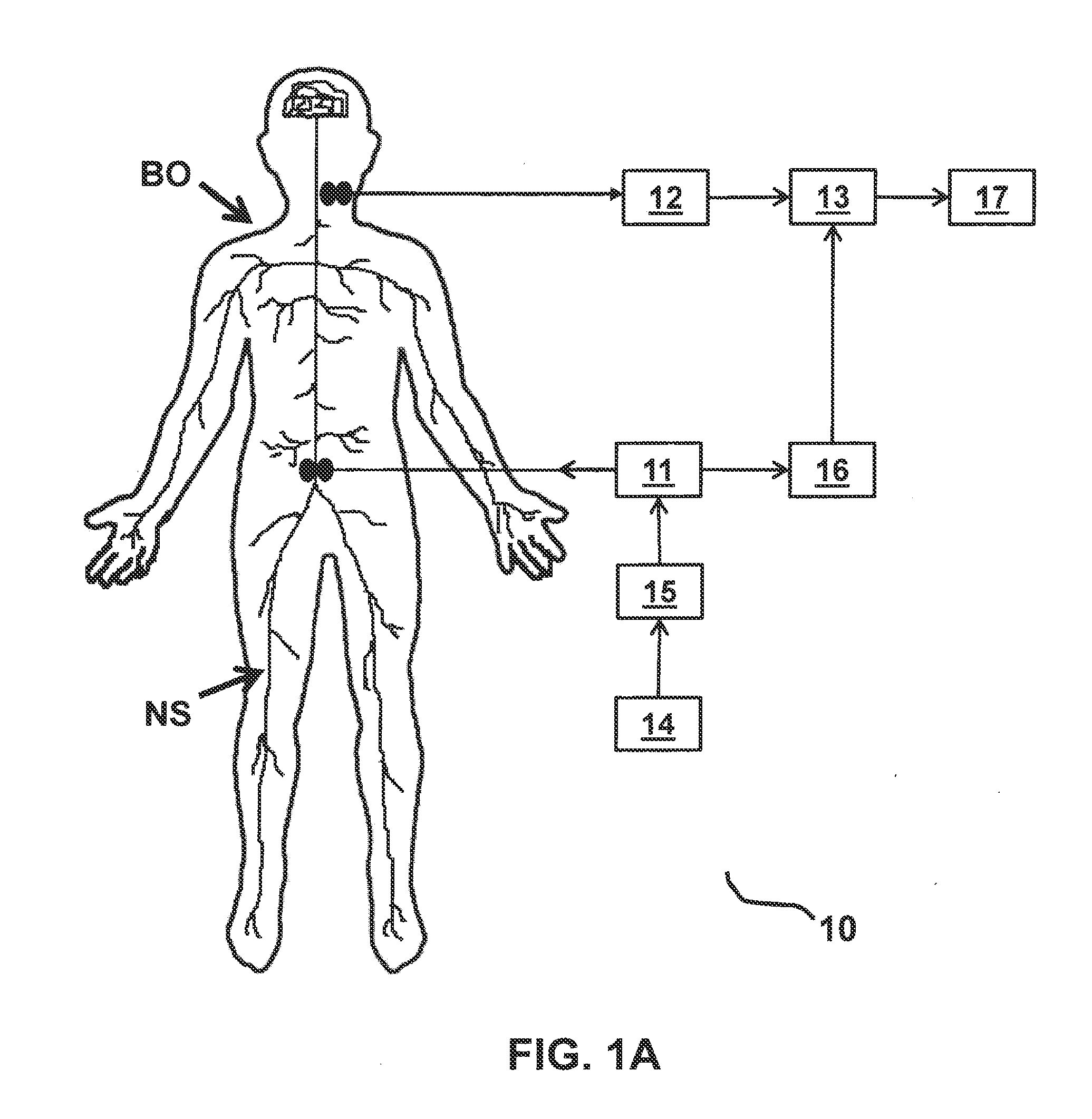Systems and methods for monitoring muscle rehabilitation
a monitoring system and muscle technology, applied in the field of systems and methods for monitoring muscle rehabilitation, can solve the problems of spinal stabilization system dysfunction, dysfunction of these subsystems, and disruption of the feedback loop, and achieve the effect of accurate temporal averaging
- Summary
- Abstract
- Description
- Claims
- Application Information
AI Technical Summary
Benefits of technology
Problems solved by technology
Method used
Image
Examples
Embodiment Construction
[0051]A system and a method for monitoring stimulation therapy of skeletal muscles are described herein. Increasingly, neuromuscular electrical stimulation (NMES) and trans-cranial magnetic stimulation (TMS) are being utilized to treat and rehabilitate muscles. It is believed that such therapies may achieve positive outcomes by improving the functionality of feedback loops between muscles and the nervous system controlling them. NMES may be applied to a patient through an implanted NMES apparatus, such as through the implantable pulse generator (IPG) described in U.S. Pat. Nos. 8,428,728 and 8,606,358 to Sachs and U.S. Application Publication No. 2011 / 0224665 to Crosby, each of which is incorporated by reference herein. Alternatively, TMS may be applied to a patient externally using electromagnetic coils positioned on or near a patient's skull. While it is known that such techniques deliver a stimulating electrical current or voltage to patients which results in muscle contraction t...
PUM
 Login to View More
Login to View More Abstract
Description
Claims
Application Information
 Login to View More
Login to View More - R&D
- Intellectual Property
- Life Sciences
- Materials
- Tech Scout
- Unparalleled Data Quality
- Higher Quality Content
- 60% Fewer Hallucinations
Browse by: Latest US Patents, China's latest patents, Technical Efficacy Thesaurus, Application Domain, Technology Topic, Popular Technical Reports.
© 2025 PatSnap. All rights reserved.Legal|Privacy policy|Modern Slavery Act Transparency Statement|Sitemap|About US| Contact US: help@patsnap.com



